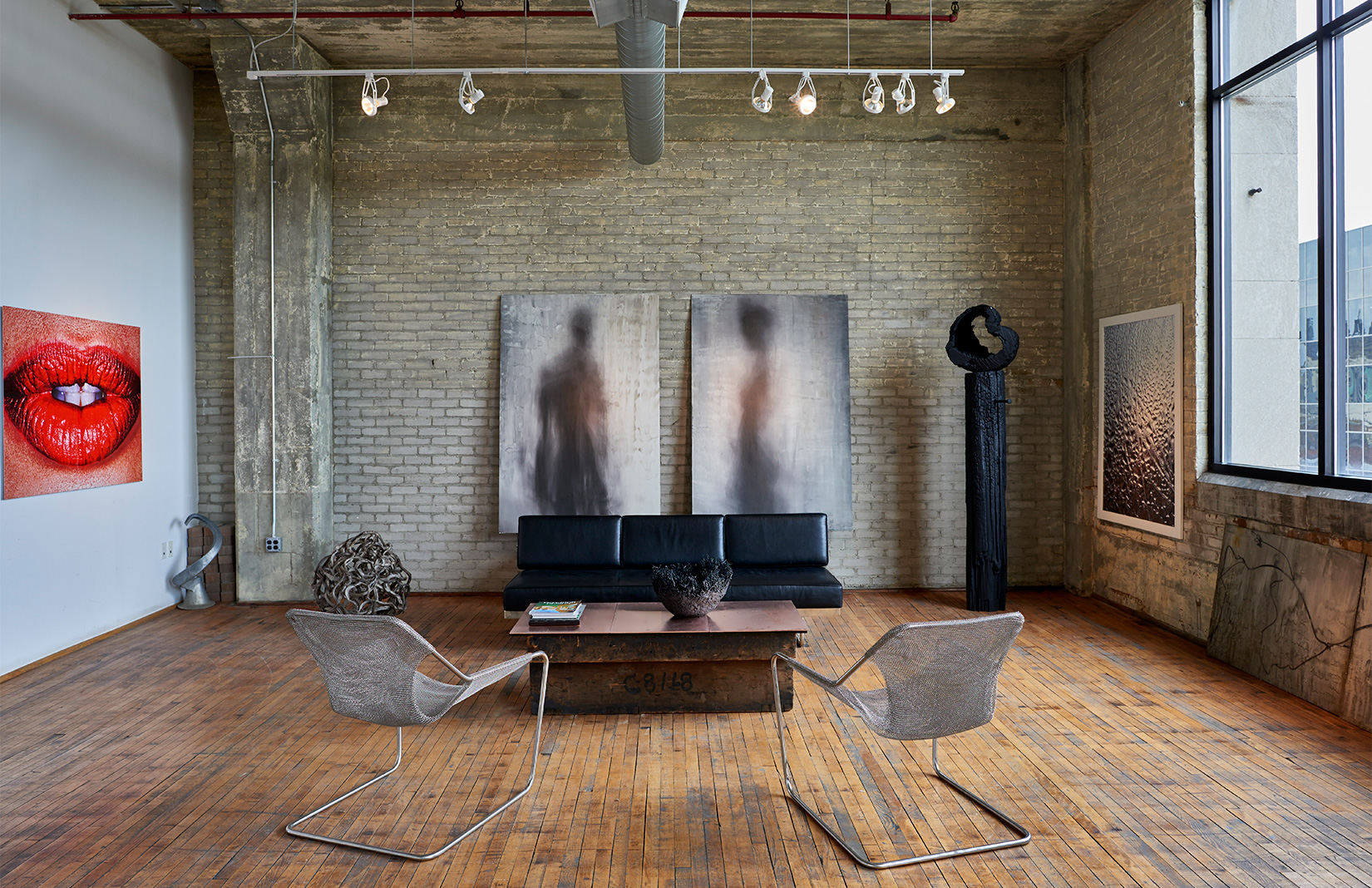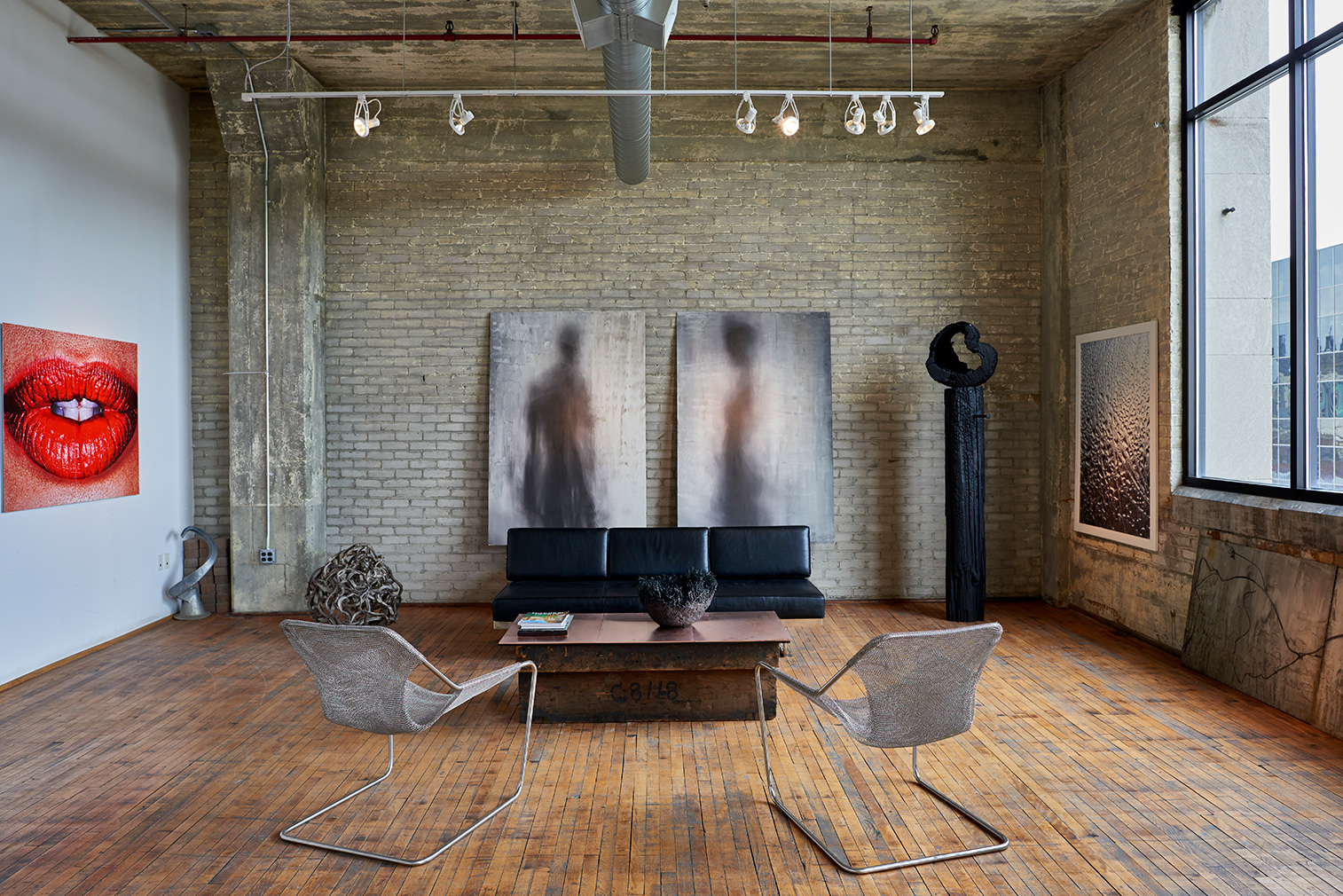
Forget ruins and bankruptcy – Detroit is a city in resurgence. Photographer Michel Arnaud has turned his lens on Motor City’s revival as a creative powerhouse for his new tome, Detroit: The Dream is Now, which spotlights the city’s new generation of movers and shakers.
One of the scene’s key players is artist, photographer and collector Lisa Spindler. She lives in raw, 4,500 sq ft loft – known as The Spindler Project – in Corktown, which she took over in 2013. Spindler occasionally invites local artists to display their work in the museum-like space, which features concrete columns and ceilings.
Arnaud spoke to Splindler about her loft and the local arts scene, in this excerpt from the book.

Photography: Michel Arnaud (c) 2017

Photography: Michel Arnaud (c) 2017

Photography: Michel Arnaud (c) 2017

Photography: Michel Arnaud (c) 2017
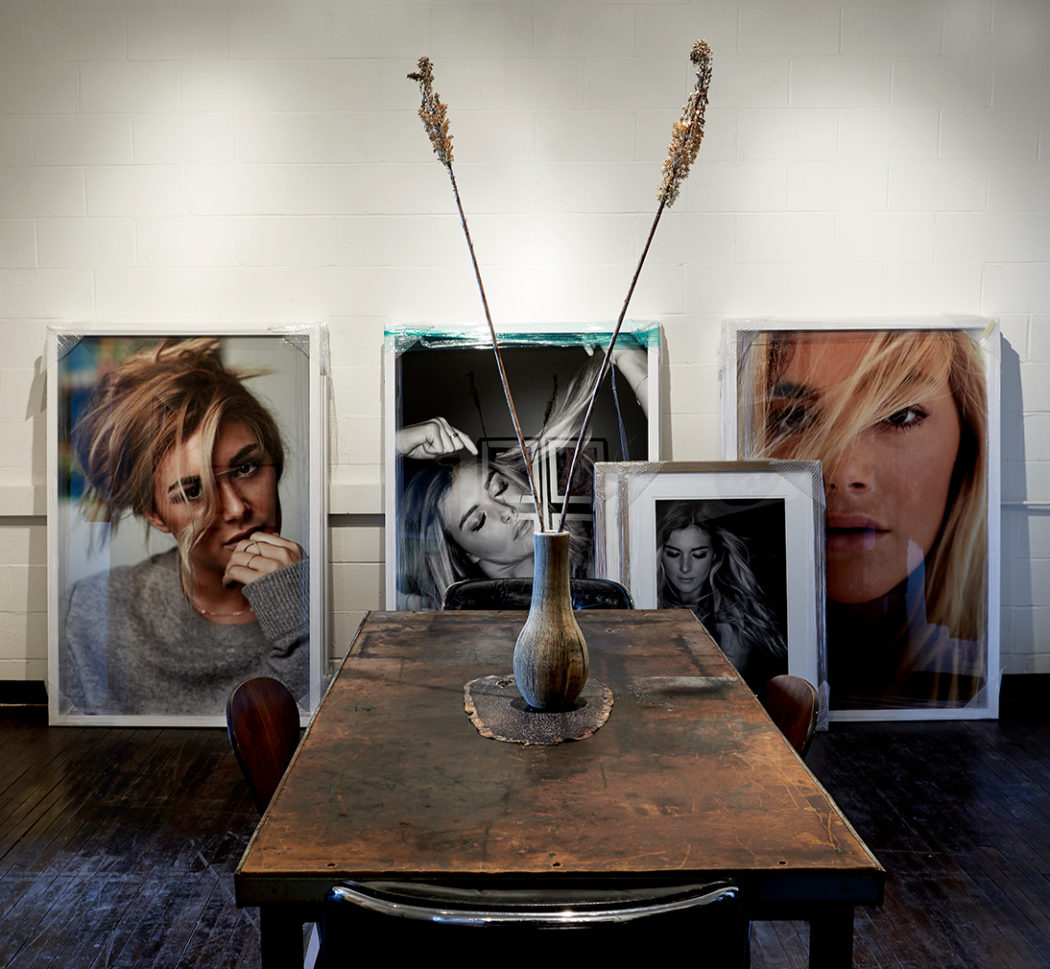
Photography: Michel Arnaud (c) 2017

Detroit: The Dream is Now by Michel Arnaud is published by Abrams
Michel Arnaud: Tell us about you, this space, Detroit.
Lisa Spindler: This building is an old warehouse located in Corktown, Downtown Detroit, about a block from the Detroit River. It is an old storage building that was built in the early 1900s.
I was very taken by the energy of the space when I walked in. The combination of the natural light coming through all the windows, the concrete ceilings, the wood floors – it felt like a temple. All I could imagine in those first few seconds was if the space was mine, how beautiful it would be to fill it with music and art.
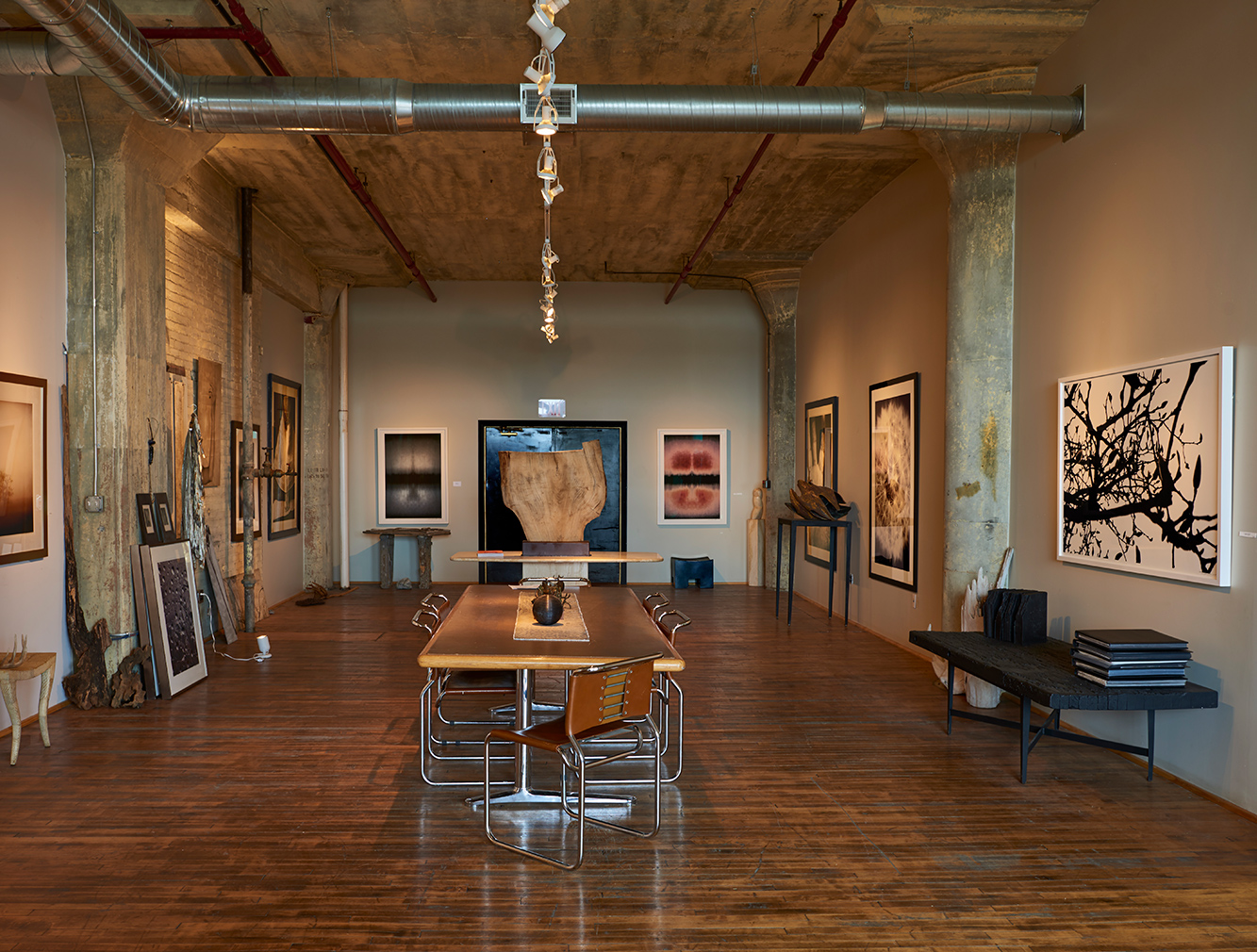
Cont’d: I signed the lease the day the city filed for bankruptcy, and I never even asked if there was running water. I knew by my instinctual feeling that I needed to save the space from being lost to someone who didn’t understand it. There was no question. I went from a 200-square-foot office into this 4,500-square-foot space. The only thing that I could afford to do when I moved in here was strip the place, clean it, and install really good lighting.
What it’s turned out to be is what I call the Spindler Project. It is a space where creative ideas take place. It’s not a gallery; it’s not open to the public; it houses my photography archives and collections of important artifacts in design, art, and furniture that I’ve collected over the years. Many of the objects are both industrial and organic, and artifacts of Detroit’s past that I feel are important to share. My current project involves the collection of the work of an artist named Rock N Roll. I feel he is one of the most important artists coming out of Detroit. His work is a fascinating collage of everything Detroit is: music, design, art, pop culture, et cetera. He is Detroit.
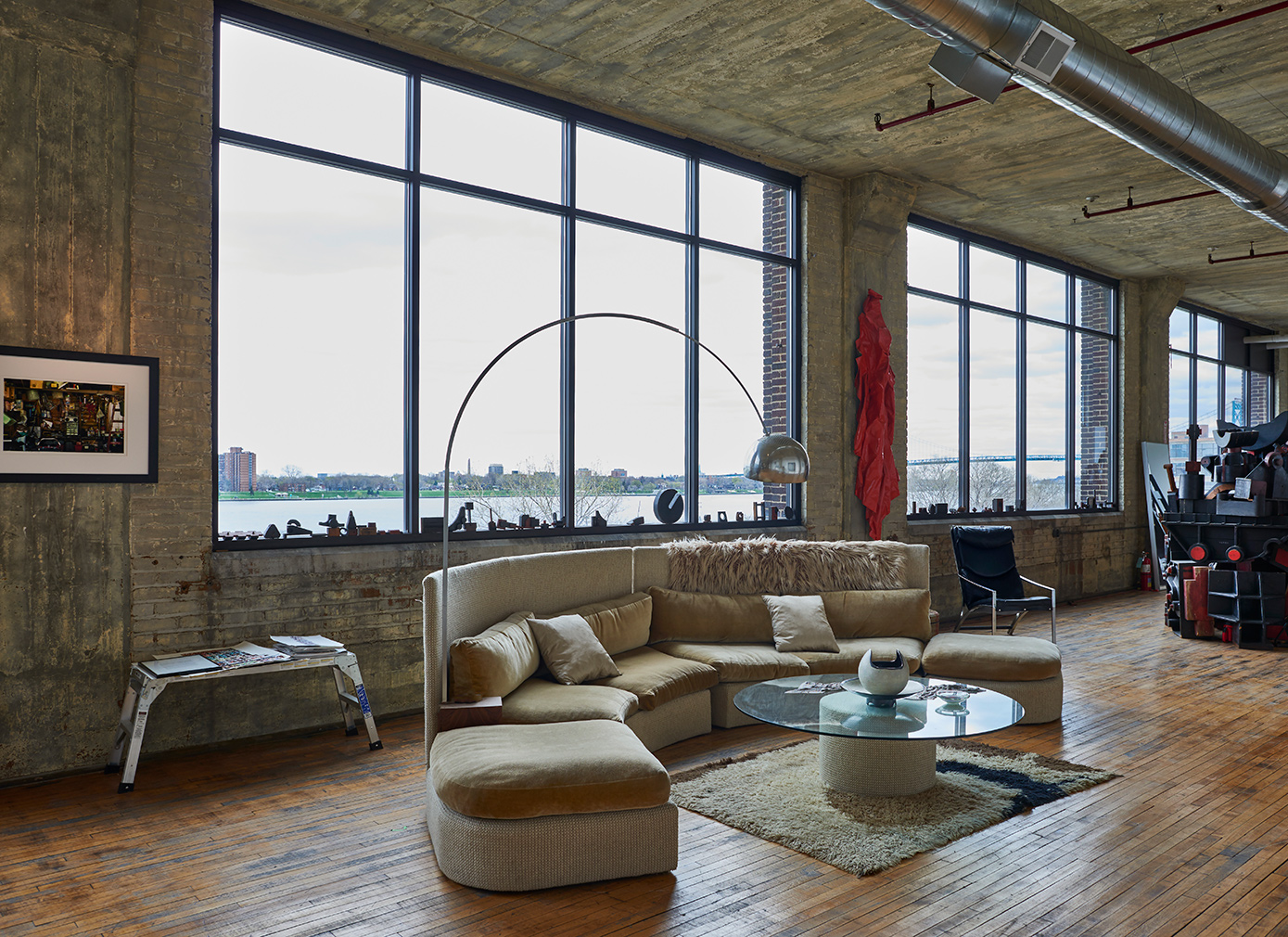
Arnaud: Being from Detroit, you have seen so many changes. What do you think about what’s going on now?
Spindler: It is the soul of the people who have made this city unique and incredible. Whether it’s the musicians, the artists, or the people who have lived here their whole lives. With the influx of people from all around the world, it is important that the soul of Detroit remain and is preserved. It’s the authenticity of what was here, what was real, and as long as it’s respected, I think it will be good.
I ask people why they’re coming here, why are they excited. The response I have heard more than once is that there’s some vibration that they can feel in the city.
Two years ago, I couldn’t get people to come here to shoot a job. Nobody wanted to come to Detroit. Now people can’t wait to come here or come back.
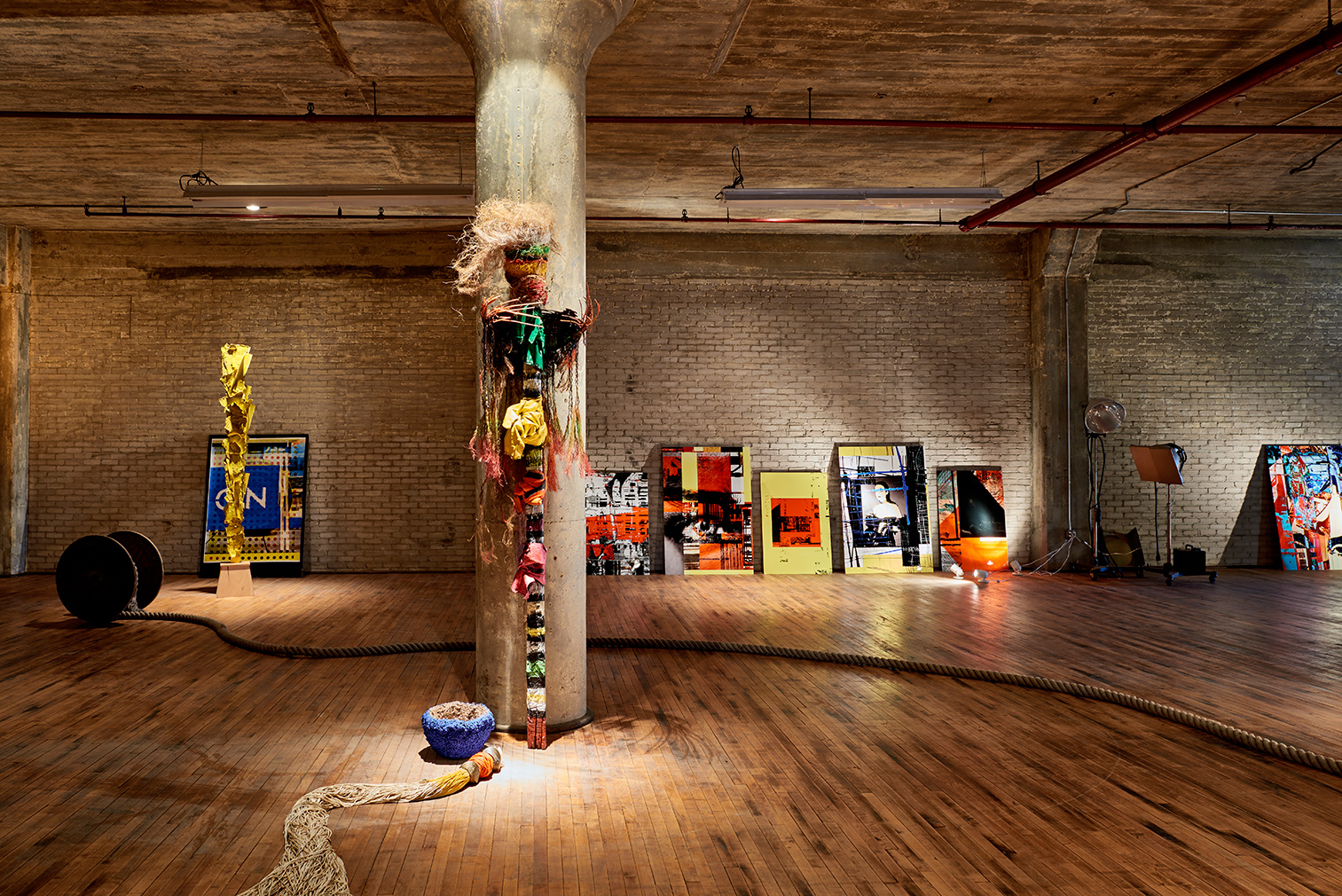
Arnaud: Do you think people are ready for these changes?
Spindler: Older people never thought they’d see it in their lifetimes – that the city would come back. People in the suburbs are starting to come downtown. I knew things were changing last summer when I saw a beautiful, young, long-haired European girl riding a bike in a mini skirt with boots, just around the corner in a rough area. I never would have seen someone riding their bike downtown ten years ago
I have to say that it’s really nice to see people walking around in the streets and to actually have traffic where we didn’t have any. In 1989, I remember being downtown in my studio. It was snowing and I could hear my own footsteps walking. There was no other sound at all – just the snow and myself. It was a ghost town. I remember how desolate and lonely it was.
It took some people with vision to get together and start investing – to take that risk.
This interview is taken from ‘Detroit: The Dream Is Now: The Design, Art, and Resurgence of an American City’ by Michel Arnaud, published by Abrams
Read next: Revitalising Detroit, a dish at a time




